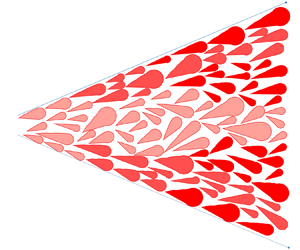Article contents
Spatio-temporal microstructure of sprays: data science-based analysis and modelling
Published online by Cambridge University Press: 10 February 2021
Abstract

This empirical study aims to characterize the dynamical behaviour of sprays using time-series analysis of the size–velocity data acquired using a phase Doppler particle analyser. The prime motivation of this analysis is to capture the spatio-temporal correlations using time-series modelling paradigms that provide valuable new insights into spray dynamics. As a first step, we study long-held assumptions, especially on stationarity and time unsteadiness. We show that air-blast sprays have increased drop size as well as velocity ordering near the edge of the spray. Analysis of the inter-particle time of the droplets shows non-Poisson behaviour where droplets that are closely spaced in time are also closely spaced in the size and velocity coordinates. Temporal auto-correlation and partial auto-correlation calculations reveal the presence of inherent correlated features in the spray. This correlation is stronger and short lived in an air-blast spray and weaker but more persistent in a pressure swirl spray. These correlations render the probability density function (p.d.f.) estimate obtained from standard methods inaccurate; therefore, we propose a technically correct way of estimating the p.d.f. using a suitable downsampling and averaging method. Statistical analysis of residuals (from appropriate autoregressive integrated moving average time-series models) uncovers an interesting feature of spray data pertaining to heteroskedasticity (stochastically changing variance) of the diameter series. In order to account for heteroskedasticity, appropriate generalized autoregressive conditional heteroskedasticity models are developed. Finally, we present a utilitarian view of these results as an empirically consistent boundary condition implementation tool for computational fluid dynamics (CFD).
- Type
- JFM Papers
- Information
- Copyright
- © The Author(s), 2021. Published by Cambridge University Press
References
REFERENCES
- 1
- Cited by





